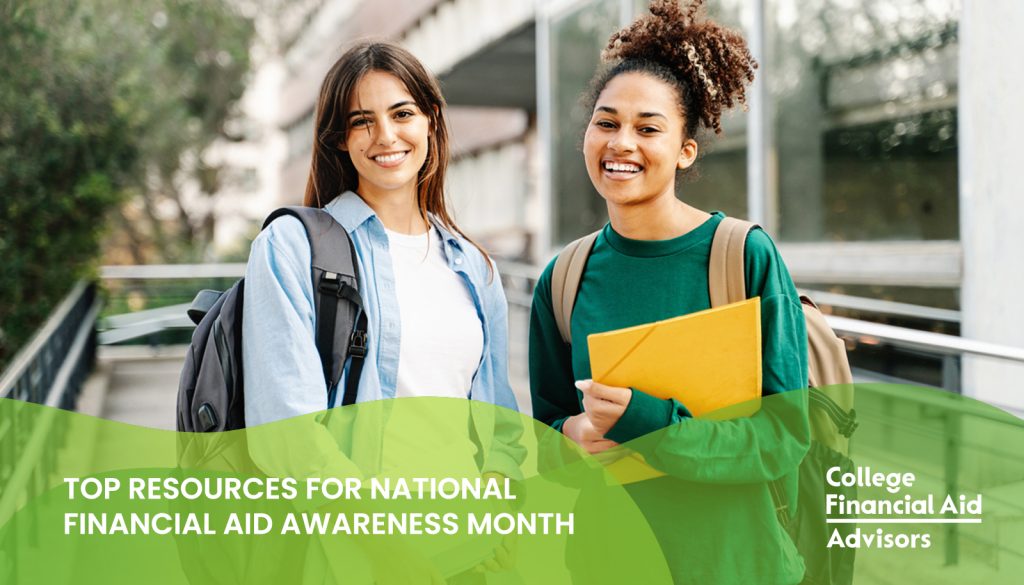February is one of my favorite months of the year because it’s National Financial Aid Awareness Month. Throughout this month, all of us in the higher education community make an extra effort to provide even more information about how to use and access financial aid for college. All of us want you to feel more confident about the entire financial aid process, so that you can feel better through the next few years of college applications and acceptance.
Over 80% of full-time, first-time undergraduate students receive financial aid every year for college, so it’s important to really understand the financial aid process. This month (and always), I want to share helpful information about paying for college.
Here’s just some of the recent blogs about college financial aid that I recommend:
The Beginner’s Guide to Financial Aid: Get the most out of your financial aid application by learning more about how the process works.
All Things FAFSA:
FAFSA stands for Free Application for Federal Student Aid. The Department of Education uses the FAFSA to determine students’ eligibility for federal financial aid based on their financial situation. Completing this form could provide you with access to federal grants, scholarships, work-study, and loans, different forms of money to pay for school. Here’s some other tips about filing the new FAFSA forms.
What’s the FAFSA and Why Should You Care:
Completing the FAFSA can help you earn federal financial aid.Not filling out the FAFSA is one of the biggest college blunders to make! It’s money that helps pay for school.
FAFSA Tips & Common Mistakes to Avoid:
The best way to complete the Free Application for Federal Student Aid is early, online or via the myStudentAid mobile app, and without any mistakes. The sooner you complete the FAFSA, the more aid you could be eligible for. The FAFSA typically opens on October 1 each year for the following academic year.
How to Start Preparing for College Applications:
The more prepared you are now, the easier your FAFSA will be when it’s time to fill it out! Check out my top tips for preparing early.
Other financial aid applications:
Depending on the college(s) your student applies to, there may be additional financial aid application requirements beyond the FAFSA. This might include the CSS Profile or supplemental forms a college may require. Take the time to review each school’s financial aid requirements!
Scholarship awareness:
Scholarships are another great way to find money to help pay for college. This process should be on the high school junior’s schedule, in addition to admissions and financial aid applications. Learn more about how to talk with your student about paying for college.
The biggest question most students have about financial aid is, “Will I be eligible?” for financial aid. If you have the desire to get an education, don’t let worries about finances be discouraging. With a little effort, you will find many options available to you. I always encourage students and families to file the FAFSA and apply for aid, even if they don’t think they’ll qualify for anything. You’d be surprised what can happen!
Happy National Financial Aid Awareness Month!
More about Jodi and College Financial Aid Advisors
Jodi is a FAFSA financial advisor who helps with the financial aid process to help families of college students maximize their financial aid. From completing the FAFSA and completing the CSS Profile to reviewing the SAR, responding to requests for verification, comparing financial aid offers and understanding student loan options, Jodi is a fantastic resource when it comes to student financial aid. Schedule a 15 Minute Power Chat to learn more about finding ways to pay for college.

